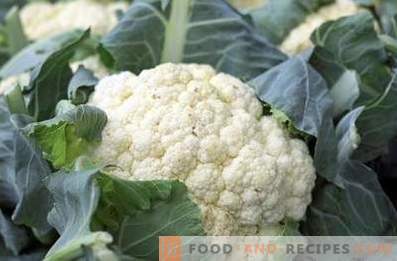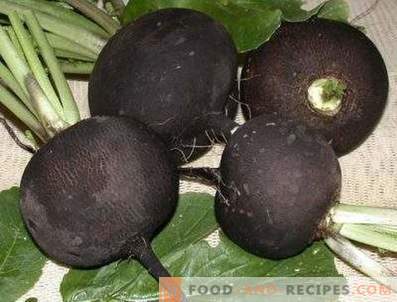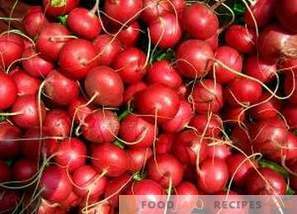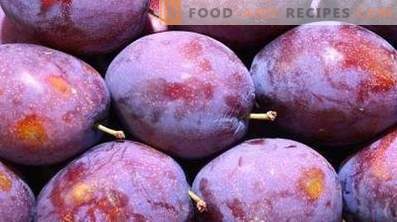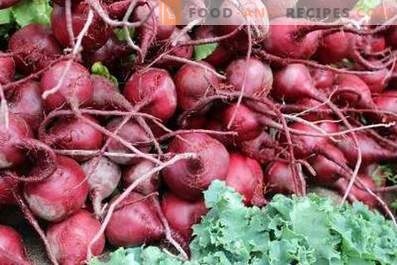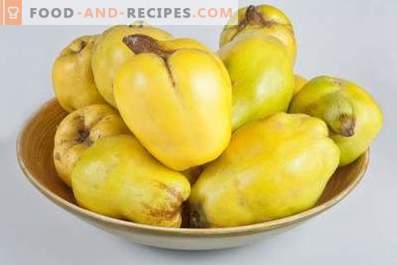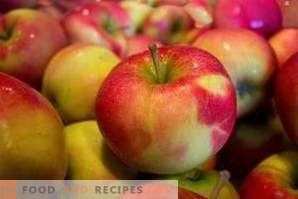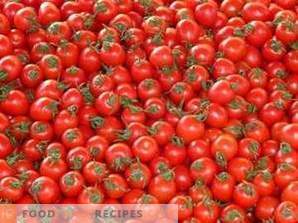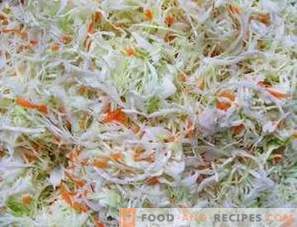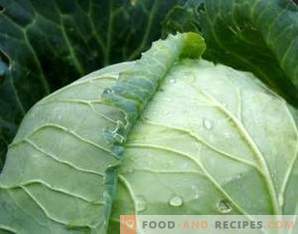
Cabbage is a remarkably healthy product that helps our body get the necessary vitamins and trace elements even in winter, when many vegetables and fruits lose their value over time. True, this statement is true mainly in relation to the white-eyed species.
Other varieties, such as broccoli, kohlrabi or colored, are much rarer guests on our tables. Yes, and keep them fresh for a long time, perhaps only with the help of freezing. With this treatment, many valuable substances are lost.
With their white “relatives,” everything is completely different. They have the unique property of preserving and even increasing their useful qualities even with salting, souring and pickling, but the most valuable remains fresh cabbage. To preserve it for a long time, you should consider several factors:
- selection of suitable varieties;
- cultivation technology;
- the terms and conditions of the harvest;
- the ability to create the necessary conditions;
- choosing the right storage method.
Consider each of the factors in more detail.
- Which cabbage varieties are best suited for storing? If you are going to grow a vegetable yourself, then you need to think about it in spring. Those who purchase already grown crops in a store or on the market, it is better to ask the name of the variety. The most suitable for long-term storage will be mid-late and late-ripening species, which can safely withstand 6-8 months under appropriate conditions, and for short-term storage (from 2 to 3 months), middle-ripening will be suitable. If at purchase it is impossible to find out a grade, it is enough just to inspect the cabbages carefully. Better quality will be more dense, elastic and less juicy specimens.
- The possibilities of long-term storage depend not only on the correctly selected variety, but also on the growing conditions. Heads of cabbage grown on sandy and loamy soils are much better preserved, and also those that receive less moisture at the end of the growing season.
The amount and nature of the fertilizer applied to the soil can also affect logging. An increase in the content of phosphorus and potassium compounds in the soil has a positive effect, but an excessive enthusiasm for nitrogen-containing mixtures will not benefit cabbage, since this leads to a decrease in the dry matter content in the leaves and makes the cabbages loose.
- If you grow cabbages yourself, note that the heads that are harvested too early often crack or fade. You should wait for the temperature to set in the range from + 2 ° C to + 8 ° C with possible night frosts with temperatures not lower than -3 ° C.
Do not harvest in rainy weather or dry the crop thoroughly before storing it. The top sheets will protect the heading from possible damage, so you should not remove them. If you are not going to store the vegetable in a suspended state, it is better to cut the stalk, leaving 3 cm.
Before laying, be sure to sort the instances. Remove all damaged, cracked and underdeveloped heads of cabbage, leaving only dense and fully ripe.
- If you want to preserve your crop until spring, be careful about preparing storage space. The main condition is to create the required temperature (about 0 ° C) and the optimum humidity (about 90%). In addition, the room should be well ventilated and not be contaminated with fungi or mold.
- There are many storage options. For these purposes, suitable refrigerator or balcony, basement or earthen trench. Having determined the place, choose the one that suits you best.
Keep in the refrigerator cabbage is necessary in a special area where the temperature is kept from + 1 ° C to -1 ° C. Such a separation exists nowadays in almost all refrigeration units. If you have only old models at your disposal, it doesn't matter either. Heading out will feel good in the lower part of them. Cabbage to keep longer, it is necessary to wrap food film, which must necessarily fit snugly to the surface so that it does not form condensate. You can use for this purpose paper that you need to change from time to time.
For storage on the balcony you will need to build a special insulated box. For insulation, you can use foam or other similar materials. You can buy for this purpose in the store household thermal containers.
For the cellar or cellar there is the largest selection of options:
- the simplest and most popular is to put the heads of cabbages upward along the stump on the shelves along the walls, wrapped in film (you can also use paper);
- it will be great to feel the harvest dug up along with the roots, placed in buckets or boxes with garden soil moistened every month;
- the method of storing heads of coils suspended from horizontal rods or self-tapping screws in the cellar ceiling has proven itself;
- if you smear cabbage with clay diluted with sour cream, dry them and place them on the shelves, you will be able to preserve their freshness and useful properties for a long time;
- you can store the cabbages in a box on a sandy substrate, sticking them with stalks (stalks no shorter than 8 cm) or laying them in layers and completely filling them with dry sand.
A rather exotic way to preserve a crop is to place it in a trench. To do this, dig a moat about half a meter wide and of the same depth. The cabbage is placed on it on straw, having closed it on top with straw and wooden shields, and then with a layer of earth. To prevent the heads from freezing, the moat on top is additionally warmed with dry leaves. This method is not particularly good, as the cabbage often rots or freezes. And he does not allow you to enjoy delicious cabbage dishes in the winter. But in the absence of better options, it is quite possible to use it, especially if you carefully follow the technology of the bookmark.
Choosing the right method of storage and taking into account all the nuances of growing and harvesting, you can save a wonderful vegetable without any problems and losses until late spring.
